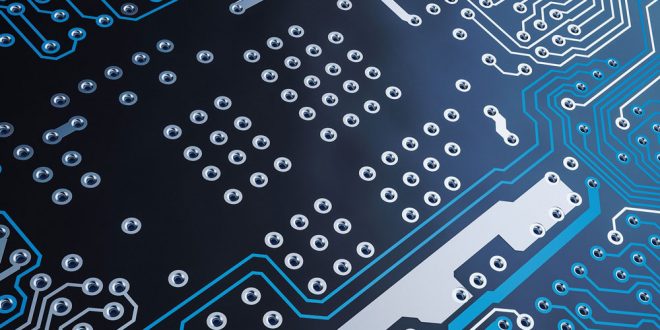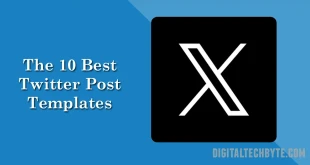We used to type on computers a decade ago. Now we’re doing a lot of things like video calling, gaming, talking and much more with computers. We used to meet in bars with strangers. Now we’re swipping their faces on apps for a chat & meet. We’ve been taking taxis.
Now an app is choosing the car for us to ride. I’ve been counting the ways we use technology that would have made little sense in 2010, as we round the corner to 2020. Which had the greatest impact? There was no new products of the 2010s— no iPod or Walkman. Yet so much has changed, bringing us new powers.
This decade made life something that happens on a screen. The smartphone is where we communicate with family, do work, record memories and find entertainment. It was invented in 2007 so disqualified from my list, but in the past decade the smartphone certainly reinvented us — it powers half of the technologies on this list.
This decade has turned life into something on a computer that happens. We connect with the family on the smartphone, do jobs, capture memories and find entertainment. Today, it is possible to see most of the developments on this list as both a tool and a absolute power. One thing we know better to go into the 2020s: great responsibility comes with great strength.
Instagram likes
Instagram from Facebook helped make photography the hobby of everybody not only by giving us filters, but by making images easy to share. Instagram has developed new forms of self-expression since it was launched in 2010, as well as new ways for tech to hijack our brains. We were made voyeurs by the feature. It became a product of living. It commodified our faces, bodies, travels and aesthetics into “brands” that even grew into businesses by some influencers. The quest for Gram-worthy holiday shots has destroyed once-tranquil locations, leading to selfie death.
Alexa – Echo smart speaker
Apple spoke about Siri AI on iPhone beat Amazon’s Alexa to market by three years. But it is Alexa — built into an Echo smart speaker playing music, answering questions and cracking jokes on demand— who has come closer to our dreams. The idea came naturally to the kids, a generation that now thinks you can access the power of the internet by talking to the lady in the box. Alexa changed our tech partnership in other ways as well. Amazon keeps recording our voices every time we talk to it to develop its AI systems.
Uber ride-hailing app
The most famous Uber ride-hailing app has changed the way we get to the airport and come home after a night out. In many areas, it has wiped out the traditional taxi industry. But when Uber’s now-ubiquitous “UberX” service started to provide transportation for non-professional drivers in 2013, it symbolized a whole new way of thinking about work. A smartphone app has become a kind of boss, software determining what job you’re having and where you’re going. This gamed work, enticing drivers to take trips they don’t want and punishing them for saying no. It has given great job opportunities to the people who were having good driving skills but had no jobs.
Netflix and binge
Remember when we had music and movies on DVDs and hard drives? I bet you don’t even know where they’re. Now we’re renting content from Netflix, Spotify, Apple TV Plus subscriptions and a growing list of such service providers. The good thing about this is that we can watch whatever we want, whenever we want, this give us a feeling of incredible plenty of content to access for. Right around the time when Netflix began streaming its first “House of Cards” original show in 2013, we stopped watching shows and started binging them. Who more needs to leave the house? The way they created ideas and the kinds of stories they were trying to tell changed by writers. There’s room for more risks: For example, last year Netflix The first four episodes of Sacred Games premiered on 29 June 2018, with the full season of eight episodes released on Netflix on 5 July 2018 across 191 countries and was a great hit.
Tesla
Tesla CEO Elon Musk is one of the most divisive personalities in tech, his influence on automobiles in undeniable. The Model S sedan that launched in 2012 is expensive and in short supply for a very long time. Today, an all-electric car has been developed as a feasible and even sexy mode of transport. This changed views of electric vehicles to this generation’s halo car from clumsy contraptions with golf-cart like acceleration. You may think of Prius when you think of a hybrid. In the same way, electric is synonymous with Tesla. The Model S even found a car to be a kind of consumer electronics. It was one of the first vehicles that got better with regular over-the-air software upgrades, making the car more like a smartphone.
Facebook News feeds
The Facebook News Feed started back in 2006, but it wasn’t until this decade that we came to understand that even our offline world is influencing it. The idea of a “feed,” which many apps and websites now use, is an answer to the abundance of information online. Rather than introducing it all or asking us to figure it out, it helps an algorithm to arrange the information based on what we’ve previously looked at. You may see business news while I see entertainment news. Foreign agents spread disinformation through targeted posts and paid ads on Facebook, Twitter and other pages. It is difficult to measure precisely how much they affected the outcome of the election or any results, but there are fierce battles over what sites of accountability will deny these contentions.
The Apple Watch
Tech has long been used by serious athletes to track results. Then in 2011, Nike created the $150 FuelBand for the rest of us, one of the first wrist-wearable trackers. Eventually, Nike killed the product, but it helped create a idea that we take for granted today: that a device might make you healthier by collecting even more body data. It’s been called the “quantified self”. Apple Watch launched in 2015 change the game of wearables, Wearables have gone mainstream with fitness as their No. 1 selling point. Today tens of millions don’t think twice about sending heart rate, movement and other personal data and taking advice on how to improve wellness and even avoid life-threatening disease. Google bought Apple Watch competitor Fitbit earlier this year, which also manufactures watches that collect body data. That creates what is sure to be one of the next decade’s biggest tech wars over health care.
Finger and face tech
The stuff of “Mission Impossible” movies was fingerprint-reading and facial-identification technology a decade ago, also known as biometrics. Then in 2013, as a way to unlock the $200 iPhone 5S, Apple added Touch ID, a fingerprint reader integrated into the home button. It moved to Face ID four years later, which reads face. Now it doesn’t feel like we’ve ever had to type passcodes to open a phone. Generally speaking, biometrics are a safe way to secure devices. The question isn’t that all our finger and face uses are created equal. Businesses are gradually selling it as a convenience; on our images, Facebook is performing facial recognition to power name tagging.
 Digital Tech Byte Latest Technology News
Digital Tech Byte Latest Technology News





